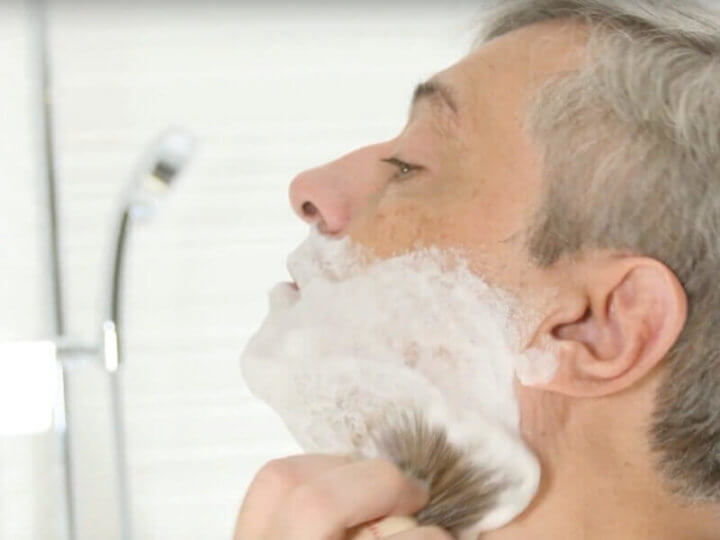
What is the best shaving brush for you? There are many varieties available, with different types of hair fiber, from small “garage” artisans to Far-Eastern factories and long-established European companies. Here is all the information you must have to make an informed decision: why you should use one, the different elements of a brush, the best shaving brushes for different circumstances, how to use it most effectively, and how to properly maintain a brush. This is an update to the original article!
Takeaway Summary: What Is The Best Shave Brush?
As with all products, caveat emptor and “your mileage my vary.” This list is not sponsored: I did not get paid to mention any of these products (however see below and the Disclosures page for more information on affiliate relationships. Alternate sources can usually be found with a simple search engine query). I plan to update this post as products change, enter, and leave the market.
AliExpress (Yaqi), Amazon, APShaveCo, Geni.us, OneBlade, PAA, Smallflower, and West Coast Shaving links are affiliate.
- Best Boar Hair Shaving Brush: Antica Barberia “Natural Bristle”
- Best Pure Badger Shaving Brush: Parker “Long Loft” Pure Badger
- Best Upgraded Badger Shaving Brush: Mondial 1908 “Super” Badger Brushes
- Best Silvertip Badger Shaving Brush: Shavemac Americana D01 silvertip
- Best Synthetic Fiber Shaving Brush: APShaveCo
- Best Low Cost Shaving Brush: Omega 10049
- Best Shaving Brush For The Money: PAA Amber Aerolite
- Best “Mainstream” Shaving Brush: Parker Silvertip Badger w/Faux Horn Handle
- Best Travel Shaving Brush: Muhle Travel Silvertip Fibre Shaving Brush
Contents – Skip To:
Criteria For The Best Shave Brush
So What Is The Best Shaving Brush?
Why Use A Shaving Brush And How To Choose One?
Best Places To Buy A Shaving Brush
Criteria For A Quality Shaving Brush
Here’s the thing: there are a lot of excellent shave brushes out there (and a lot of junk, too)! The wet shaving niche’ is currently experiencing an “embarrassment of riches” with a huge variety of quality products.
Unlike a few years ago, there are now many fine choices when it comes to purchasing a shave brush. With so many options, variables, and sources, how can the “best” shaving brush be determined? Like the other “best” lists on Sharpologist, I think we can use some (albeit somewhat arbitrary) parameters (heaviest weighting first to narrow the field):
- Performance: how well the brush builds lather given the individual circumstances.
- Construction: materials properly manufactured and waterproofed– hairs/fibers don’t shed.
- Reputation and popularity: experiences reported on blogs, forums, and shopping sites.
- Over-all value.
- Availability and length of time on the market: there are many fine artisans but they tend to come-and-go from the market so this list gives a little more weight to established sources.
- Available in different sizes: some brush lines have different loft or handle sizes to accommodate larger or smaller hands.
Why Trust This Article?
Why trust this article and Sharpologist? Recommendations are based on over ten years of first-hand experience from Sharpologist‘s editor (me!), contributors, and readers, who have actually purchased and used the product; and extensive research of relevant blogs and niche’ forum postings. I have personally used all the brushes on this list.
Other “best shaving brush” lists often just look at well-known brushes on Amazon and don’t take into account the specific circumstances a consumer may be considering. I think this article takes a better approach.
You should be able to find a brush with virtually any budget so set yourself a maximum price and stick to it. Bear in mind that many shavers who use shaving brushes (especially those who use a double edge safety razor) eventually get another brush after they have used one for a while and have decided they have a preference for a particular aspect or type of brush.
Listing a best brush can be particularly difficult because the performance aspect is partly “in the eye of the beholder.” Some people prefer brushes that are softer on the skin; others prefer a stiffer brush with more “scrubbiness.” Some think a fan shape works best while a bulb shape has its boosters as well. I’ll try to take ideas like these into account.
Note: AliExpress (Yaqi), Amazon, APShaveCo, Geni.us, OneBlade, PAA, smallflower, and West Coast Shaving links are affiliate.
Now for the details….
Brush Bristles
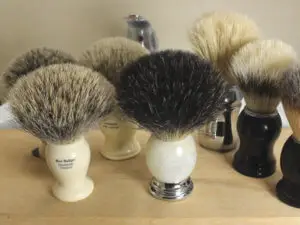
Shaving brushes generally come in one of four types of bristle: boar hair, badger hair, horse hair, and synthetic material.
Boar Bristle Shaving Brushes
A brush with boar bristles–sometimes called a “natural bristle” shaving brush–are the most commonly seen in mass market outlets such as drug stores and “mega-marts.” Most of these brushes are not very well constructed and tend to require more work to get a good lather from.
Boar bristles are also quite “stiff” and provide more of a scrubbing or exfoliation action on the skin.
However that is not to say that all of these types of shaving brushes are substandard. On the contrary, a well-made brush of this kind may provide years of service and can work quite well after a break-in period. Sometimes these brushes are dyed to look like badger hair brushes. Boar hair retains less water than badger hair but selecting a boar hair brush with a higher “loft” (see below) can help compensate for water retention.
Best Boar Shaving Brush
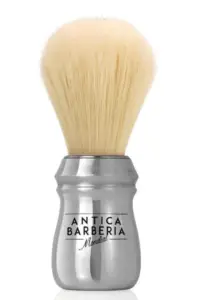
The Antica Barberia “Natural Bristle” shave brush is unlike any other boar brush I have used:
- It doesn’t smell bad (or hardly at all, for that matter).
- The handle is firm and hefty in my hand instead of cheap plastic or lightweight wood.
- The knot is well-packed and secure.
- The brush “splays” better with less “scratchiness” than other boar brushes I have used.
- It “broke in” very quickly (though I did use the accelerated break-in method).
- It builds a really good lather in a short time.
Alternatives: Omega Pro 48 is a well-respected and popular boar hair shave brush. Likewise, the Semogue 620 has an excellent reputation, though an extended break-in period is common before it starts to perform well.
Related Post: Boar Brush Bounty
Badger Hair
Badger hair brushes have been historically regarded as the preferred material for shaving brushes and can generally make a better lather, more quickly. They also can retain more heat and water than brushes of other types. However there are several different grades of hair (taken from different areas of the animal), and unfortunately there is no standardized grading process. But here are some general guidelines:
- The lowest grade of badger hair is generally referred to as “pure.” Pure badger hair is characterized by a dark color and thick, relatively stiff, coarse-looking hair. Some manufacturers will bleach the hair slightly to make it appear like a higher grade but the hair itself will still look coarse. A pure badger hair brush is not necessarily a “bad” brush–there are high quality, well-made examples that perform quite well.
- The next grade of badger hair is usually called “super,” best,” or “fine.” These mid-tier brushes are generally better constructed and the badger hair is finer-looking, softer, and lighter in color. They retain retain water and heat noticeably better–sometimes dramatically better–than lower grades.
- The highest grade of badger hair is usually labeled “silvertip” (though, confusingly, Simpson and Edwin Jagger refer to these as “Super”). These brushes are typically made to the highest standard, often with hand-crafted workmanship, commanding the highest prices. Silvertip badger hair is often cream colored on top with darker bands of color below and very fine but still fairly flexible hairs. Silvertip badger bristle will retain even more hot water and heat than super badger brushes, but is a less dramatic improvement.
Two Band vs. Three Band Badger Knot
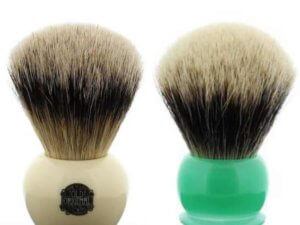
Then there’s the “two band vs. three band” badger bristle debate. Generally this refers to two sub-grades within the mid-grade (super/fine/best) tier, though some apply it to other badger hair grades as well. Visually it refers to the colors seen on a brush’s hair knot as seen from the side: two-band have a lighter color on the upper part of the hair and a darker color on the lower part; while three band brushes have a light color on top, a darker “stripe” in the middle, and a lighter color on the bottom.
Very broadly-speaking, two-band hair is a bit thicker and stiffer while three-band hair is a bit thinner and more flexible–though both are still “soft” on the skin.
Other Variables
Some manufacturers bleach or color their brushes which confuses matters further.
You may see references to “gel tip” silvertip badger shaving brush knots. This is badger hair that have a ‘hook’ at the very tip of each hair. They’re very soft on the skin.
If you’re about to buy your first badger hair shave brush my recommendation is not to worry about the nerdy details but to get a decently-made brush at a price you can afford from a reputable source.
Best Pure Badger Shaving Brush
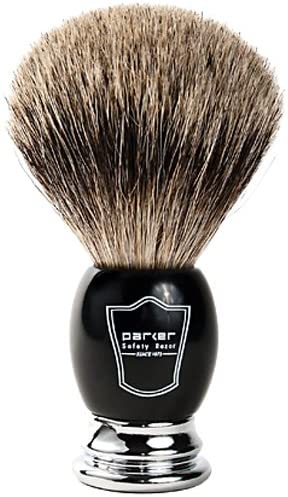
Pure badger hair is characterized by dark, relatively stiff, coarse-looking hair (more on this later). Many low-end, pure badger brushes are not well-made and do not last. One I can recommend is the Parker “Long Loft” Pure Badger shaving brush (US $35)–Parker’s best-selling brush and pretty widely available, too. Very good performance. Knot: 22mm.
An alternative is the Simpson S1 in Pure Badger, a small-ish brush and somewhat expensive for its size but it enjoys a good reputation.
Best Upgraded Badger Shaving Brush
Previously popular upgraded badger shave brushes from well-established brands like Vulfix and Edwin Jagger seem to have fallen out of favor over the past few years (though the Simpson name still carries weight with some shave aficionados). Many brush makers are making a strong transition to synthetic fibers, as they perform as well as upgraded badger brushes without the animal cruelty stigma.
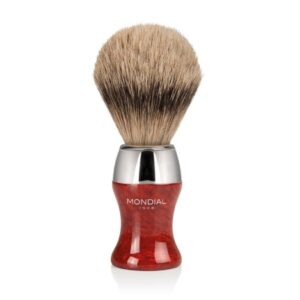
The Mondial 1908 “Super” grade brush line uses a higher-quality badger hair than many other “Super” grade brushes, and I find them more densely-packed and better-built than other, perhaps more well-known (in the US) brands. They are available in a number of handle styles, lofts, and knots.
There are a number of worthy competitors to this brush, including Parker’s Best Badger shave brush in white and chrome,
Best Silvertip Badger Shaving Brush
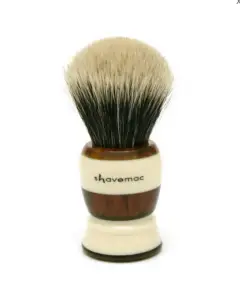
Shavemac’s “D01” silvertip brush stands out in the silvertip crowd for being unusually soft and dense at the same time. For those who think there isn’t that much difference between the higher-end Super/Best/Fine grades and “silvertip” grade (and you would be right, there usually isn’t that much difference). the Shavemac luxury silvertip experience may be the exception that changes your mind.
A Special Note About Boar And Badger Hair
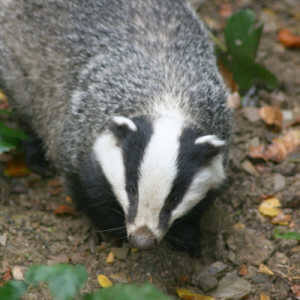
“Are badgers killed for shaving brushes?”
Badgers (and boars) are killed to harvest their meat and hair so if that is a concern you may want to select a brush with synthetic or horse hair (see below). Virtually all badger hair used in shaving brushes come from China where the badger is considered a pest and controlled under license but there is some controversy over how humane the “harvesting” process is.
Some brands and vendors, including The Art Of Shaving, Edwin Jagger, New York Shaving Co., Executive Shaving in the UK, and others have pledged to discontinue selling badger hair brushes.
Synthetic Brush Knot Shaving Brushes
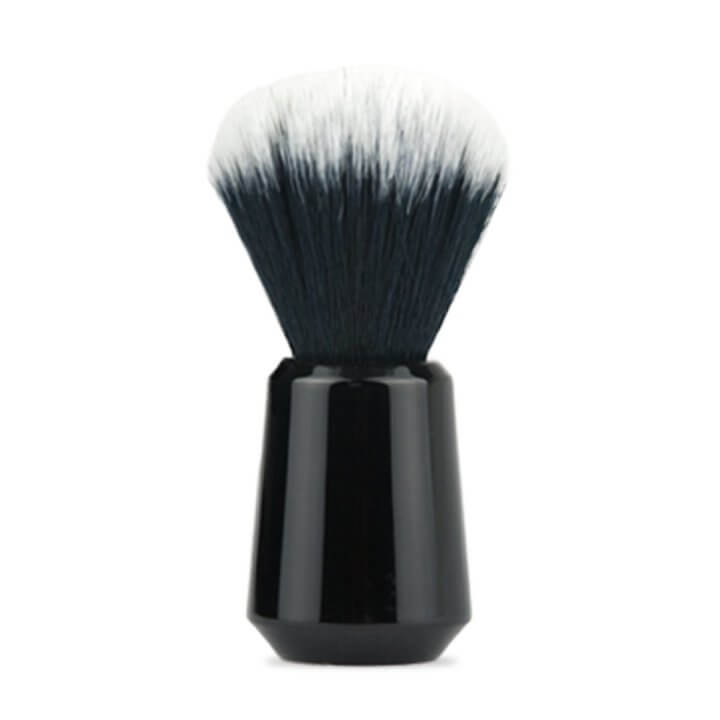
Synthetic shaving brushes can range from brushes with simple nylon bristles to those with more specialized synthetic material. In the past their price and performance usually fell between those of boar and “pure” badger brushes. However significant improvements have taken place over the past few of years and the latest generations of synthetic materials are now equal in performance to quality mid-tier and even “silvertip” badger brushes!
The ingredients of some “brushless” shaving products (like a gel or a foam) may damage a brush’s natural hair so if you are unsure of the ingredient reaction consider using a brush with synthetic hair.
Synthetic fiber shave brushes have a number of advantages over animal hair products:
- No break-in period
- No animal smell “funk”
- Quicker to dry
Different synthetic fibers have characteristics that emulate other types of hair.
See Synthetic Shave Brushes – Are The Days Of Badger Hair Shave Brushes Numbered? for a complete discussion.
Best Synthetic Fiber Shaving Brush
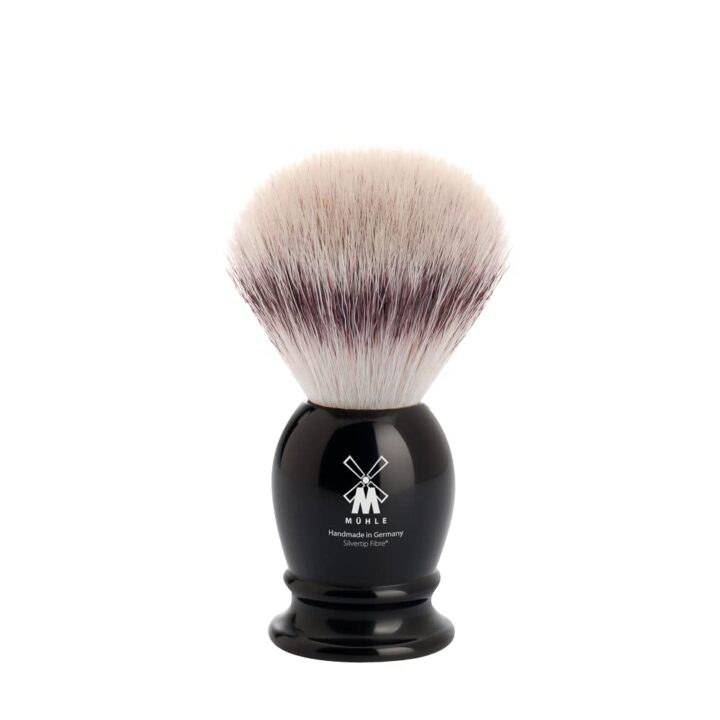
This is a particularly tough decision to make. The latest generations of synthetic shave brushes from all sources have gotten really good, with performance meeting (or beating!) that of a good badger brush.
While they may perform like the best badger hair brushes they may not feel like one on the skin. But that’s not necessarily bad! Some shavers prefer a softer brush while others may like a firmer-feeling fiber on their skin.
Some brushmakers are now producing quality shave brushes with not only different sizes but also different types of synthetic fibers to more closely match the preferences of the customer. I think one such established maker is APShaveCo.
Alternatively, I can recommend the Muhle Synthetic Shaving Brush because it is not only an excellent performing brush but it is also available in different sizes. And it is still an excellent line of brushes.
Horsehair Shaving Brushes
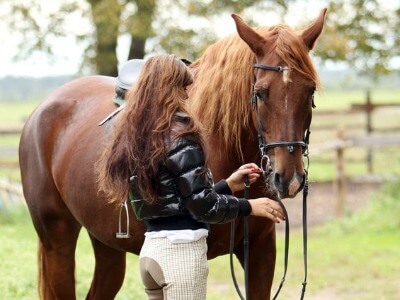
Horse hair shave brushes returned to the market after being out of favor after an anthrax scare around World War 1. They are generally made from the grooming castoffs of a horse’s mane or tail (or a mix of both) and the animal is not harmed.
The performance is roughly that of a boar brush (though less stiff) and it is considered the most “natural and animal-friendly” variety.
Note that horse hair shave brushes can smell very “funky” for a while, much more-so than ones made of animal hair brushes. More on “the funk” later.
Unfortunately there were really only two reliable artisans of horse hair shave brushes and the most well known one, Vie Long, ceased operations in 2023. Semogue offers a limited line of horse hair brushes.
Special Cases
Sometimes you have specific reasons for a certain kind of shave brush. Here are some ideas.
Best Low Cost Shave Brush
There are a lot of low-cost shave brushes. Unfortunately most don’t perform well, are poorly built, and don’t last. There are a handful of exceptions, though. Here is a decent brush that goes for under US $10:
Omega ’49 brush (US $10): a classic among many European barbers. Overall Height 126 mm, Loft 63 mm, Knot 25 mm. The Omega ’48 is another well-known alternative.
Best Shaving Brush For The Money
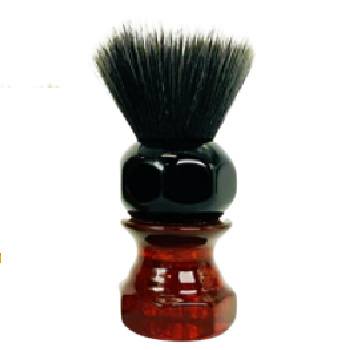
Some shaving brushes are known for “punching above their weight” and being a great value for the money spent.
The Phoenix Artisan Accoutrements (PAA) Amber Aerolite synthetic shaving brush uses synthetic fibers that I think come closest to both the feel and the performance of a great brush made of badger bristles, for a fraction of the price (US $20).
I have a lot of shave brushes but the PAA Amber Aerolite is my “go to” shaving brush for everyday use.
The PAA Peregrino uses the same fiber knot with a slightly larger handle.
Best “Mainstream” Shaving Brush
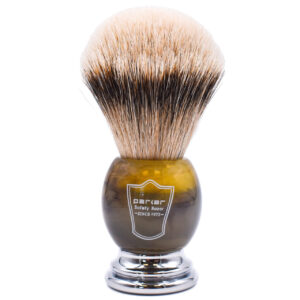
There are several brushes that are well-known for the sheer number of units sold, particularly on Amazon. Unfortunately, from a quality and value perspective, uneducated consumers are often selecting brushes of dubious quality. Setting those aside, there are shave brushes that are both popular and a reasonable choice for the shaver who is just looking for a middle-of-the-road, reliable brush recommendation. Here is a good one:
The Parker Silvertip Badger w/Faux Horn Handle (US $65)
The Best Travel Shaving Brush
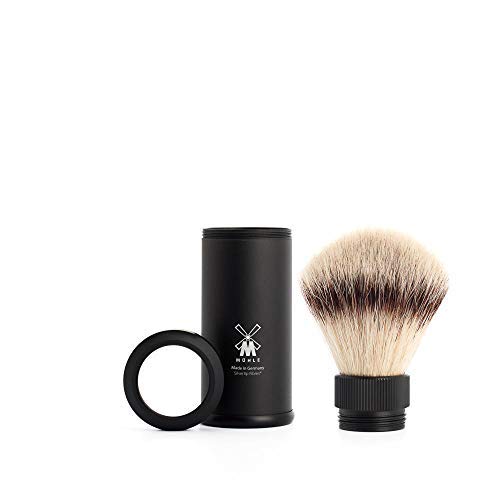
Really you can take any brush with you when you travel–you just need to keep it in a container that can get some air flow (I use a prescription pill bottle with a few holes drilled into it). But there are brushes that lend themselves to travel more readily.
More recently I have taken a Muhle synthetic fiber travel brush. Synthetic brushes by their nature dry more quickly and are less susceptible to picking up weird things from the environment.
Why Should I Use A Shaving Brush? Is A Shaving Brush Worth It? What Are The Benefits?
Simply put, a shaving brush is the perfect way to prepare stubble for shaving. And not just for a single reason–there are a number of ways in which using a shaving brush benefits the shaving process:
- Hydration
- Cleaning and Exfoliation
- Lather Coverage
- A Better Shave Experience
Hydration
Whether you’re using cheap canned shaving foam (just don’t…) or the most expensive shaving cream, it’s really water that does the “heavy lifting” for a shave, preparing the skin and the facial hair. But water alone is far too “volatile” to use by itself for most people (though admittedly some can just have a wet shave in the shower with just water as long as there is a continuous flow available). Shaving products (such as foams, gels, creams, etc.) exist to stabilize and hold water against the skin–and yes, provide even more lubrication and cushion with additional ingredients.
Using a shaving brush further mixes product with water making an even more effective, rich lather for the razor blade edge to track on (and reducing the amount of air in the lather as well, preventing the skin from prematurely drying and possibly causing irritation). Plus the shaving brush usually needs less product to make a good lather: traditional shaving creams and soaps may cost more up-front but you use so little of it at once it will last far longer and the cost per shave can be quite low.
Cleaning And Exfoliation
Because a shave brush is most often used with a lathering shaving soap or cream, using a brush can reduce (replace?) the need for a pre-shave routine of washing or cleansing the skin. Using a shave brush also produces a mild exfoliating effect on the skin: think of it as helping sweep away tiny bits of debris from around hair stubble.
Lather Coverage
When shaving products like shaving cream are applied with just fingers, hairs tend to matte to the face, making them more difficult for the razor’s blade edge to get at. When used properly (more on this later), a shaving brush lifts hair and surrounds it with lather, requiring less work from the razor blade edge(s).
A Better Shave Experience
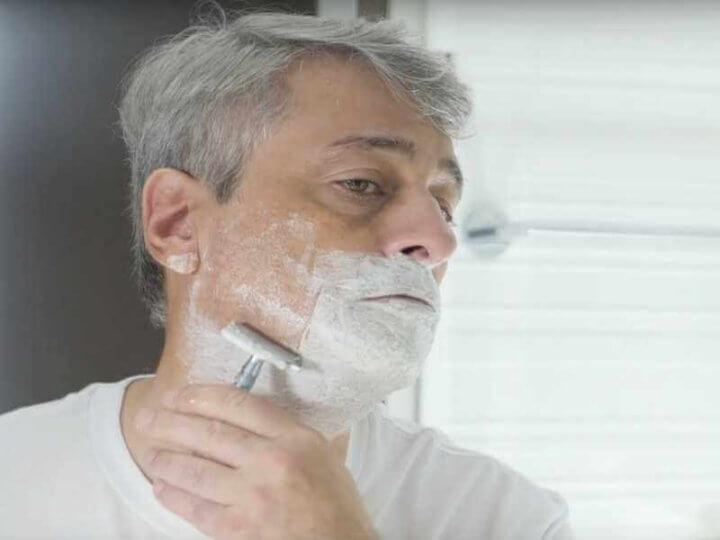
Beyond the more practical aspects of using shaving brushes, it can also enhance the shaving experience–it can feel really nice! Ever get a barber shave with the towels and the warm lather? You can get a similar experience with a shave brush. And for some, that feeling of a warm, fragrant lather on the face is very relaxing and appealing. It’s almost a “Zen” or meditative experience.
Brush Knot Size And Brush Loft
Brush dimensions are typically expressed in millimeters and are often divided into three sections: loft, knot, and over-all height.
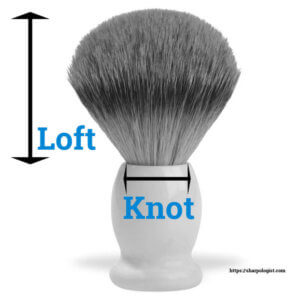
- The loft is the length of the actual hair from the top of the handle to the tip of the hair.
- The knot is an indication of the amount of hair packed into the handle. The knot dimension can be a little ambiguous because hair can be packed tightly or loosely (the best shaving brushes generally have relatively tight knots, regardless of hair type).
- Finally the length of the handle is factored in to determine the over-all height of the brush.
Generally, larger brushes tend to work better at lathering large areas more quickly (think legs or skull), while smaller ones offer more control. Brush sizes cover a very wide range but I think its safe to say that the average loft is about 50 millimeters and the average knot is about 22 millimeters.
Hair Shape
Brush size and shape are a little more ambiguous. The tips of the loft can be shaped into a fan-like shape (some are essentially flat) or into a bulb-like shape. Each style has its advocates but there’s no real agreement about it.
Shaving Brush Handles
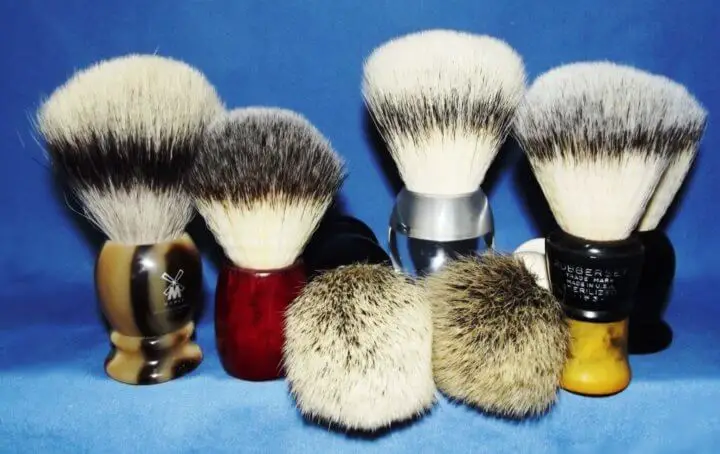
Handle material, size, and shape is yet another personal preference.
In the absence of knowing what you want I suggest measuring the distance from the palm of your hand to the pad of your thumb and let that measurement be the maximum length of the handle.
How To Use A Shaving Brush
Here is your best opportunity to enjoy your shave. It takes (a little) longer to make a lather but it is worth the trouble.
Odor
NOTE: The first few times you use an animal hair shave brush (particularly the less expensive ones) you may notice a not-particularly-pleasant wet animal smell–often referred to by shaving aficionados as “the funk.” This is normal and should go away after a week or so of use. You may be able to knock it down more quickly by thoroughly washing the brush hair with pet shampoo, rinsing thoroughly, and letting it dry completely. Repeat if necessary.
The Lathering Process
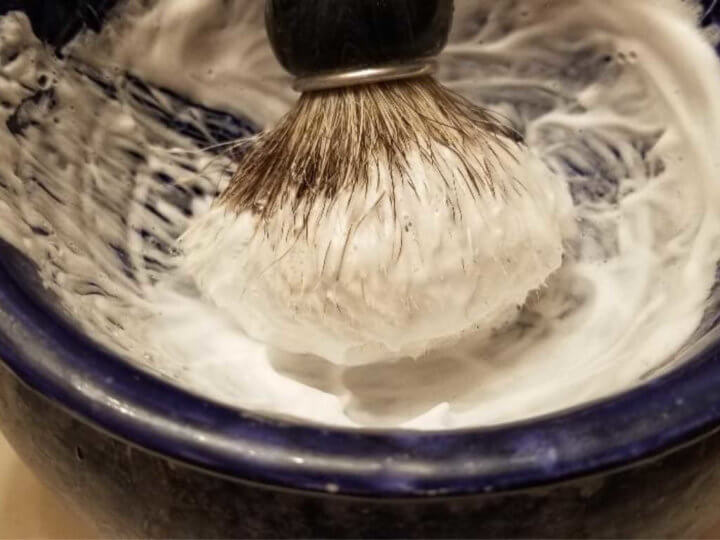
There are some variations on how to make a good lather with different products, and it can take a little practice to get right, but the payoff can be a dramatically better shave. There are two general schools of thought on making traditional shaving lather, differentiated mostly on how water is integrated into the mix. The classic (sometimes called “frugal”) method of lather-making starts with minimal water on the brush, adding water until you get the lather consistency you are seeking.
Another school of thought starts out with more water on the shaving brush which the excess is drained in a particular manner. Neither method is right nor wrong. Try both methods to see what works best for you. You may need to set some time aside time to experiment as you learn the “art” of lather-making. Don’t worry–once you get the hang of it you can cut that time way down.
The type of brush you are using can make a difference. Here is an example of lathering with different brushes:
“Classic” Lather
Making shaving lather the “classic” way starts with soaking both the brush and the cream or soap in water (if you’re using a synthetic material brush you can just swish it in the water, you don’t have to soak it. Though soaking should let it retain heat longer). Here is a video on YouTube that may help show the process:
“Perfect” Lather
An alternative to the “classic” way of making lather is a method I call “perfect” lather. After soaking grab the brush by its handle, hold it inverted with one hand (hair down, handle up) and with your other hand circle the hair with your thumb and forefinger like you’re signaling “that’s perfect,” and gently give it a squeeze.
If You Are Having Trouble
It’s safe to say everyone has experienced trouble making traditional shaving lather at one time or another. Here are four shortcuts to making a better, more stable lather, more quickly.
“Superlather”
Priming the brush with a shaving soap then adding shave cream (often called “Superlather”) can be an effective (though perhaps a bit messy) way to get a stable lather. Loading a large, fairly wet shaving brush with shave soap (or even a gentle glycerin-based facial soap) will “trap” water and hold it where it needs to be. Then adding a shaving cream will fully hydrate the lather and also create a really slick cushion to work with.
“Uberlather”
A trick similar to “Superlather” is “Uberlather.” Uberlather is the process of adding a few drops of pure glycerin to the shaving brush before lathering with cream or soap. The extra glycerin will create a more stable, longer-lasting lather. Glycerin can be found at your local mega-mart, drug store, or large grocery store, usually in either the skin care or first aid isle.
Distilled Water
Sometimes lather is not very good because your local water has too many minerals or contaminants (e.g. “hard” water). If you have hard water try mixing in some distilled water. Just heat some up (not to boiling!) and pour it into your sink (with the stopper closed, of course).
Citric Acid
Another tactic to try for hard water is a tiny amount of Citric acid. It can often be found with the canning supplies at large groceries and mega-marts. Again, you may need to experiment a little with the amount to add but start out with just a tiny bit–just a pinch of citric acid to a whole sink full of water. Using too much citric acid will change the pH of the water and you may not get any lather at all!
After You Are Finished
Most shavers rinse their brush after every use, though there are some who advocate leaving it loaded.
After you’re finished with your shave, rinse the brush thoroughly in warm water, gently “pumping” the water through the brush until it rinses clear.
Then–gently!–squeeze the water out of the brush and wipe it on a dry towel, “fluffing” the hair to break up any hair that might be clumped together.
Do not shake or “flick” the brush vigorously! Doing so may weaken the glue knot holding the hair into the handle over time: one day you may have a hairy projectile flying through the air!
Store your brush in a ventilated area–NOT in a closed cupboard.
A brush stand is useful but not required (unless a manufacturer recommends one).
Brush Life
“How long do shaving brushes last?”
A typical shave brush properly maintained should last for at least five years (and often ten years or more).
There are some variables involved but all but the cheapest shave brushes should last you for several years of regular use. Some of the high-end ones may last a lifetime but most will show a noticeable decline in performance after five-to-ten years.
A Shave Brush Deserves To Be In Your Shaving Kit
In conclusion, a shaving brush is an important tool for a close, comfortable shave. There are many factors to consider when choosing the best brush for your needs, such as hair type, bristle stiffness, and handle length. With so many options available, it can be difficult to know which brush is right for you. Hopefully, this article has provided some guidance in making that decision.
Have I answered all your questions? If not, leave a comment below!
Like this article? Please share it!
Over to you. What do you think? Do you have any of these brushes? Any other recommendations? Leave a comment!

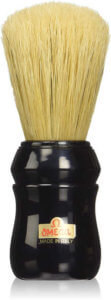
Rune Jans told me about Maggard’s 70% Badger/30% boar knots. I installed a 26mm and a 28mm in handles(the 28 mm is a Nordic Shaveman handle). they have become my favorites, over my 30mm Cayuen’s with SHD knots(also from Maggard’s)
I like picking handles that appeal to me esthetically and gluing them together is no big deal. just impatience waiting for 3 or 4 days to feel certain the silicone is cured.
but for boar I am very biased, I love my Zenith Tri-colore(colors of the Italian flag, hey my maternal grandparents were from 2 towns in Avellino, Campania, Italy) so I have biases
Very thorough review, well done!
Just a few observations:
__ The : Shavemac Americana D01 silvertip:
The picture you have seems to be of a two-band brush. Incidentally, I have a Shavemac D01 silvertip two-band, with the same knot dimensions as the Americana. It’s a great brush and very dense, but not as soft as a regular silvertip.
__ The Muhle Travel Silvertip Fibre Shaving Brush:
I have this brush too, but I find the knot too small for a comfortable shave. my choice for a travel brush is the Omega 10066 or similar boar knot size (e.g. the Omega 10083). It has the feel of a Professional pure bristle, but is smaller, yet fully capable of producing plenty lather. It is also relatively cheap (much cheaper than the Muhle you recommend) and so easily replaceable if damaged or lost while on the road.
__ One suggested addition to your list:
The Semogue 730 HD Silvertip is one of my overall favourite badgers. One advantage of this brush is the relatively cheap price (for a quality badger). Dimensions are comparable to the Omegas I mention above, great face lathering brush.
Jens, thanks for your comments, that’s very useful!
I’m still reading this extensive article, after the most recent update, and checked out the links to the Best Synthetic Fiber Brush. The link to the Muhle synthetic fiber brush shows the same brush images that you displayed in the article, however the description of the brushes’ materials reveals that the hairs are silvertip badger hair, not synthetic fibers.
It looks like another update is needed to correct this part of the article.
It’s possible that the link for the synthetic fiber brush was redirected at the destination to another brush, so please verify it.
I’ve got a lot of useful tips from this site and your various articles: truly what my own father didn’t know and therefore couldn’t teach me in my youth. If only I knew these things decades ago. Thanks for a lot of great info.
Just a few reactions:
– The article includes good general info on brush characteristics for those who are just getting started. So that’s worthwhile.
– I’m surprised that the “best” list includes no Simpsons brushes. The Vulfix in the list doesn’t count.
– I’m also surprised that the article doesn’t mention Rudy Vey or Brad Sears as artisans. Both have been doing great work for a number of years. Based on personal experience, I can recommend both.
– As to cost effectiveness, no one can tell other folks if buying more expensive products will be “worth it” for them. For me, a high quality badger brush is a joy if it has the right stuff for me. Again based on personal experience, I’d rather have one high quality brush, even if it costs $100-$200 or even more, than a collection of bargains. But it really is personal, subjective, and definitely YMMV.
I thought about Simpson a lot while preparing this article. Simpson, and to a lesser extent Kent, certainly have the history and reputation for premium badger brushes. And for a long time they were “the only game in town” when it came to high-end badger. But these days there are many more options and more brushes that perform as well, or better than, Simpson.
As for Rudy and Brad, you’re right, I need to add them to that paragraph. 🙂
Mark,
Thanks for your reply. FWIW, to me, the Simpsons are at least as effective and pleasant to use as the brushes on your list that I’m familiar with. As an example, I rank Simpsons Manchurian knots as at least equal to Shavemac 2-band and 3-band silvertip. Each has its own character, but to me overall quality is comparable. The Simpsons Best knots are softer than the Manchurians but still have good “backbone” and by and large are a good value.
Great article, Mark.
A few years ago, I became a fan of Edwin Jagger’s best “super” badger hair brush. It is superb for creating and administering a full thick lather. After reading this article, I thought to check on the Edwin Jagger web page. To my surprise, I clicked on “brushes” and found this statement: “All Edwin Jagger shaving brushes are filled with the highest quality, handed graded synthetic fibre filling.” I was shocked. Does this mean my badger brush is worth more than I made for it?
Dartan
Hi Dartan– I just looked at EJ’s brush page and they still have badger brushes, though it looks like they’re transitioning to synth’s. I’ll reach out to my EJ contact to see what their plans are!
Great article Mark, its great to see the hobby growing and also plethora of artisan brush makers who have emerged.
My first brush was a Menu boar which I got from a house clearance it was an excellent brush.
My first badger brush was a Geo F Trumper’s SB5 which in terms of density and loft is the best performance that I have experienced though I also have some artisnal brushes but I find the knots tend to be more densely packed and I don’t think they perform as well.
I can also say I have a Simpson Wee Scot and a Simpson special pure badger and both are as soft as a super badger knots.
My favourite brush is my Simpson Wee Scot it works great for me and I had used it in many videos which some of my viewers enjoyed seeing my style of lathering with the little brush.
One gentleman dubbed me king of latherers or best latherer on YouTube.
I have always enjoyed your content and it has helped me getting into the hobby I especially enjoyed your videos.
It would be nice to see an occasional shave. I think that there’s many of us who would be of the same opinion.
Very best regards Gordon
There is nothing lacking in the long-lofted Omega boar brushes. They are excellent value. My 48 is twelve years old and has been used thousands of times. Admittedly, the silver handle now looks awful and the loft is a bit floppy, but it stills lathers incredibly well.
Buy a wooden handled, long Omega and you can expected it to last for a very long time.
Omega 48
Semogue 2000
I would recommend the Omega 49, but I already own the Semogue 2000. Too similar.
The Omega 48 is my go to, just creates more lather than you can work with. The Semogue 2000 I use when I get tired of the mess the 48 creates.
I’m in favor of boar brushes. Quality boars work, create a ton of lather, wake up your beard better. Any ingrowns are already there, it is not your brush…IT COULD BE YOUR PRE SHAVE or YOUR SHAVE SOAP…but it isn’t your brush preventing or post-fixing ingrowns.
Bronners tea tree soap+washcloth, Parker 24C or Muhle R41, Personna HOSPITAL blades (Robbins Instruments), the above brushes, Pre de Provence or Shea Moisture shave, and for the moment (post-shave) summer/warmer months: Dickinsons witch hazel, winter/colder/drier months: Quinn’s unscented witch hazel. When you feel the Quinn’s getting too heavy it’s time to switch to Dickinsons. NOTE TOO HEAVY. Typically after a 2-3 hours in winter, wash your face with plain water.
I’ve been chasing this for over a decade now. My face hates parfum, phenoxyethanol, and something in Kiss My Face impossible to track down. VERY disappointed Thayers changed to adding phenoxyethanol. Thayers was the perfect aftershave.
The Parker 24C is the perfect beginner shaver. LONG SHAFT.
DO NOT GO AND BUY THE MERKUR.
With the shaft, go find a Muhle R41 head—you’ll appreciate it later.
I’m probably switching from the R41 back to the 24C head. The R41 served me well in winter when I wanted/needed aggressive, lately it’s been a little too rough.
Robbins Instruments has the Personna Med Prep blades. The sharpest you’ll find. Save your time buying “sample blades”.
RANT OVER, maybe someone will read this
I also like the Omega Pro 48 (10048) a lot. In addition to lather capacity (and lather-making ability), I find that I also very much like the feel of the brush on my face: good resilience + long loft results in a very pleasant feel.
I haven’t noticed any mess at all in using that brush, do I assume we use different techniques. I wet the knot well under the hot-water tap and let the brush sit sopping wet while I shower. Then at the sink I rewet the knot (to heat it up), shake it well so that it’s just damp, and load the brush. Sometimes — especially with soaps that contain clay — I have to add a very small amount of water during loading, but there is no mess at all.
I’ve had a Parker 24, but I found that the Maggard Razors V2 open comb head seems to be identical to the Parker, and I use that on one of their stainless handles (specifically, this one).
This Sharpologist article lists the razors I’ve found that (a) are both very comfortable and highly efficient and (b) cost less than $100 — the cheapest (and it’s excellent) is $6.
I got an early R41, and though it was very efficient, it was also very uncomfortable (for me). I think that head appeals to those who enjoy a challenge with the morning shave. 🙂
Is there a benefit in leaving lather on your face for 4 or 5 minutes before shaving?
30 seconds or so yes, 5 minutes probably not.
Just the right amount of time to pour another drink!
You don’t need a constant water flow for hydration, Turkish barbers often don’t use shaving soap or creams, just a wet towel, and you can get just as good a shave, sometimes even better, i used myself to just use water, before i became a nerd, because it is all it takes 🙂
If Turkish barbers use a soap or cream, it’s their always dripping wet brushes in hot water that does it, i’ve started doing that, not squeezing out the extra water in the brush, cause you absolutely don’t have to, and if you have tried being to professional barbers, you really haven’t tried any barbers, before trying a Turkish one, those people know what they’re doing!!! 🙂
I do believe, Mark, you made a video even explaining, that it doesn’t make much of a difference, going from “Pure” to “Best” badger, and i totally agree! You can take the cheapest brush, and make amazing lather, i guess that is why Italians always say, that the only useable brush to them, is Boar 🙂 They’re cheap, and they just WORK!!!
I tried the Taconic with good but not great feeling. Too much splay, not enough backbone. But I guess each of us looks for our own “holy grail” of brushes that will sustain us too early in the morning and without at least one coffee. My brushes are all silvertip ranging from a brush purchased the first day “The Art of Shaving Opened” to Shavemac in Germany to various artisans I have found on the web. Each has their beauty, characteristics, and use. I also rotate brushes on a weekly basis which I believe lengthens their life span. So my bottom line is that if I am going to take my life in my hands each morning with the chance of cutting my throat, I am going to pamper myself with the perfect brush that will outlast me. :)=
Very well researched article and guide.
Thnx again for the useful data. I’m really inlightened w/blade info. Had no idea of what criteria was used to distinguish the different blades. For some reason my instinct has made me gravitate toward some good choices. (Great job) on your part. As far as brushes, w/ no data on my part just used the pocket book mantality. Which means go w/ one can afford & work w/ it. Thnx again. The best
I believe that the key to great lather is the whipping action of the brush when the lather is applied to the face. I have two brushes that are excellent in this way . The PAA Atomic Rocket and the Muhle MJM. A big brush and a small brush, each giving me a great lather.
Recently I awakened to the excellence of the Omega Pro 48 (10048), and now it’s my desert-island brush. It took me a long time to realize just how good it is — and in this post I set out the reasons it is so excellent (and also describe how to break it in quickly).
I have a great many brushes and I’ve used even more, but the Pro 48’s unique characteristics have charmed me.
Hi! Another very interesting article.
I would like to know about the Rocky Mountain Barber Company Best Badger Shaving Brush and the Rockwell Synthetic Shaving Brush. Anyone have any experience with these?
Thanks!
As always, you offer important insights both to the nerds and the laymen. I consider myself a mixture of the two. I started out with the then fairly expensive Simpsons Coronel Best Badger some 25 years ago. I had 4-5 razors in my rotation, including the Muhle R34 and the R41. I would shave with anything from
1 day to 3 weeks intervals and needed the variety in aggressivenes. I didn’t pay much attention to the brush, it just worked with my hard soaps and creams. The latter for travelling. After about 15 years I invested in an Omega boar brush and fell in love with it after the initial “break in” process. Some 10 years ago I ventured into the world of synthetic brushes, but after having struggled with 4 of those I gave up. This was until I stumbled across PAA’s synthetic brushes while I was looking for a DOC razor. With some initial “training” and adjustment in technique, I have found that these synthetic brushes work as well as “natural” brushes (the hyphens indicate that there is nothing more inherently ‘natural’ in using animal hair to make a brush for shaving than using oil derivates like plastic, IMHO). In short, PAA’s Amber Aerolite has become my staple brush substituting my Omega Professional. I still use the Omega from time to time for nostalgic reasons, but I don’t really “need it”. And my badgers? I still have two of those, one Muhle in addition to the Simpson Coronel. I use them from time to time, but badger is not my thing.
I have been using shaving brushes for more than 40 years and have owned most of the luxury brands of badger and boar. A year and a half ago I tried a Yaqi synthetic on a whim. I think it outperforms my Simpson Chubby 2 by a wide margin at a fraction of the price. I have sold all of my natural fiber brushes and will never go back. The best synthetics have better flow through, better face feel and dry faster than naturals. I have four Yaqi and one Stirling synthetic. None of them has lost more than one or two fibers (my two Simpsons lost hairs every time I used them), and they don’t have the funky smell of naturals. GET THEE A SYNTHETIC BRUSH!
I was very surprised and pleased by my Muhle “Silvertip” synthetic brush. It is as good as I could want; extremely soft but with great backbone, quick-drying and so far, after quite a few shaves, it hasn’t lost a hair. (touch wood for next time)
I have tried a few high quality badger brushes. The Kent BK…. 12???? The biggest one?… was a huge, floppy monster that nearly suffocated me.
This is tight, focused and efficient.
A few years ago, synthetic brushes were sub-standard. Not now.
Another great article. My only question is, What do you get with a brush that is over $200. sometimes significantly more? If you didn’t know the price of an expensive brush could you really tell it apart from one that is a “mere” $50. Would you notice any difference in the shave? Would your wife take that as permission to spend an equivalent amount on shoes?
Hi Saul– Expensive shave brushes generally have either an exotic handle material or some kind of “pedigree” to justify the cost.
Check what your wife spends on cosmetics and then spend an equal amount on shaving kit. You will be able to buy whatever you want 😉
I like…All of them.
LOL